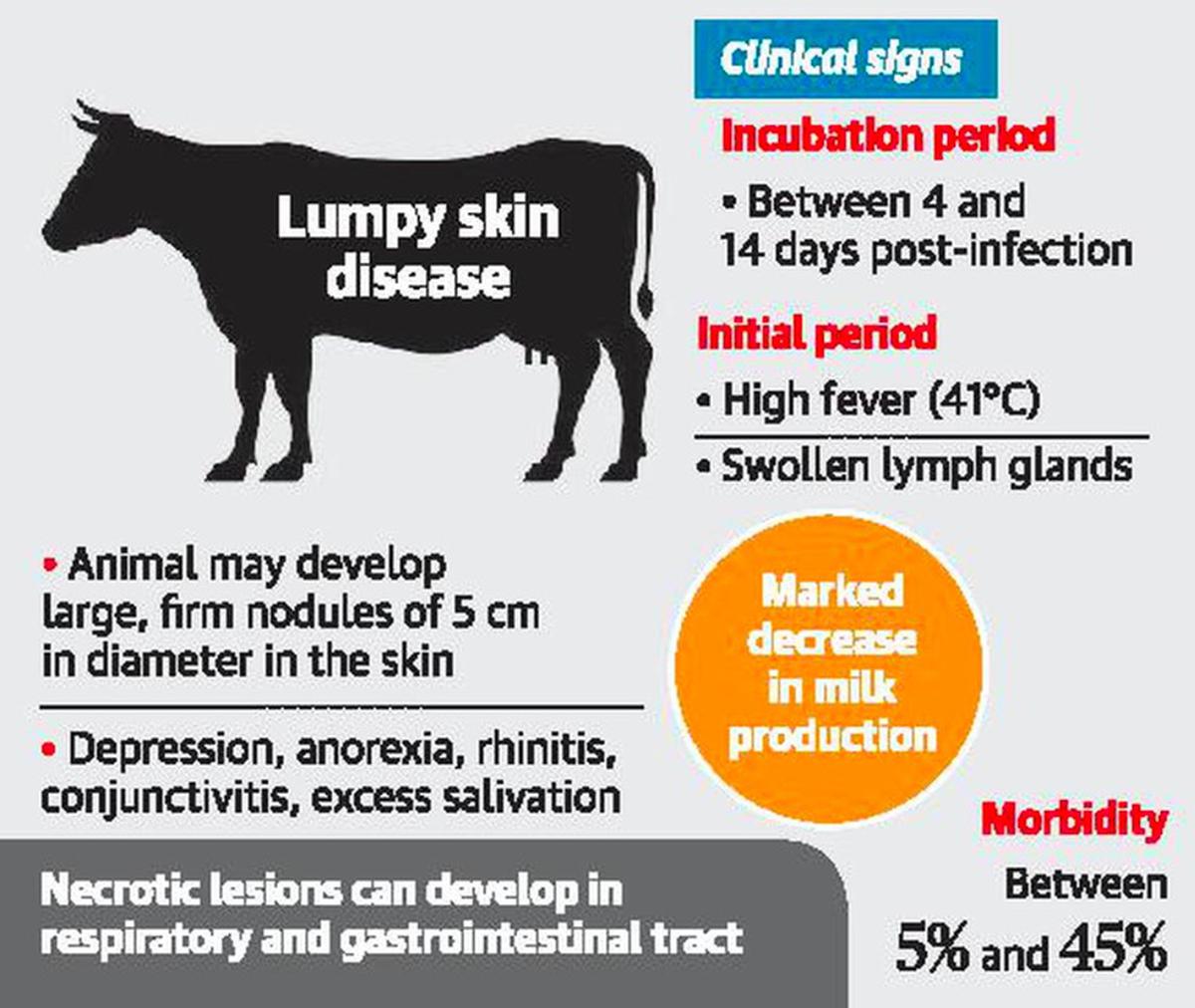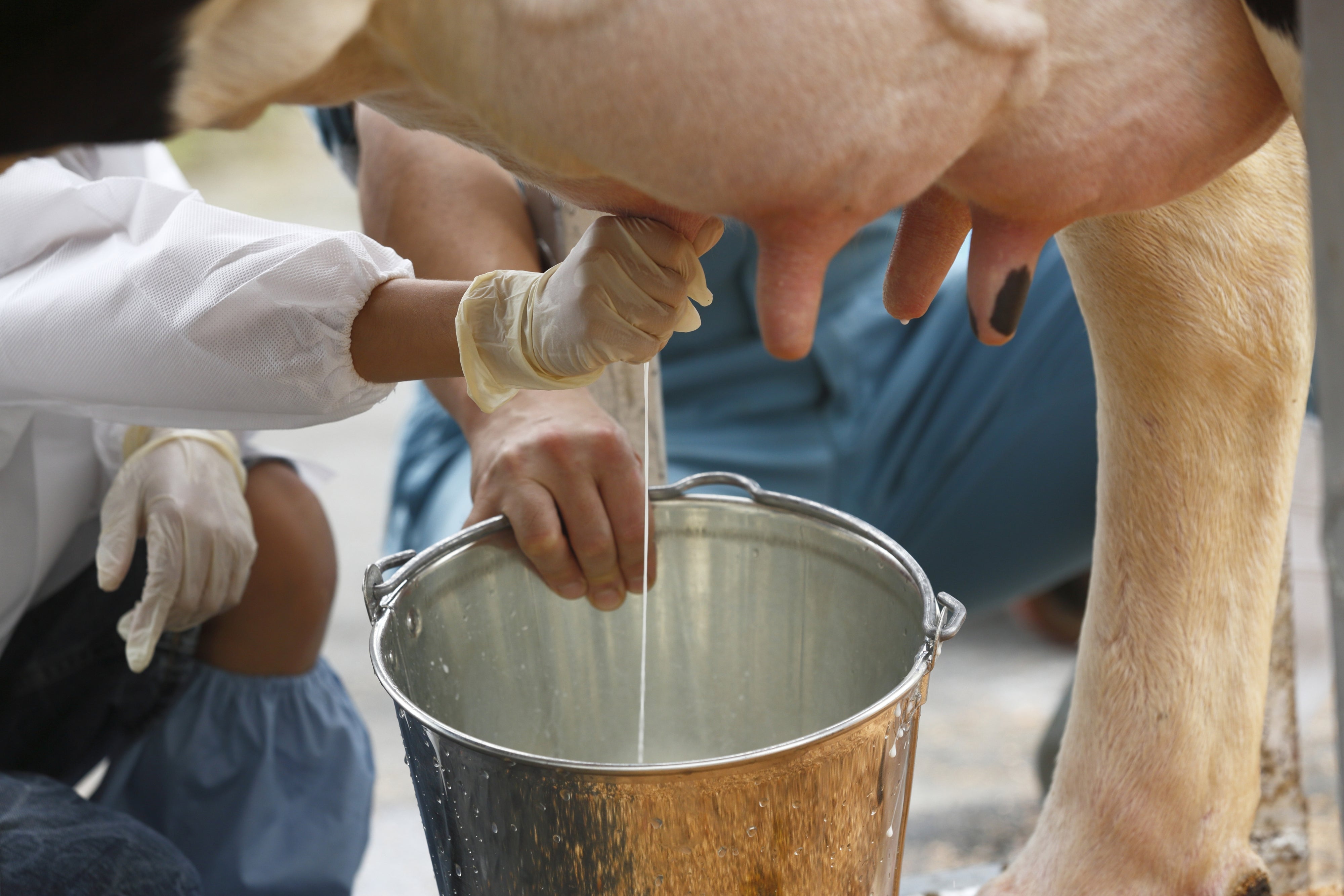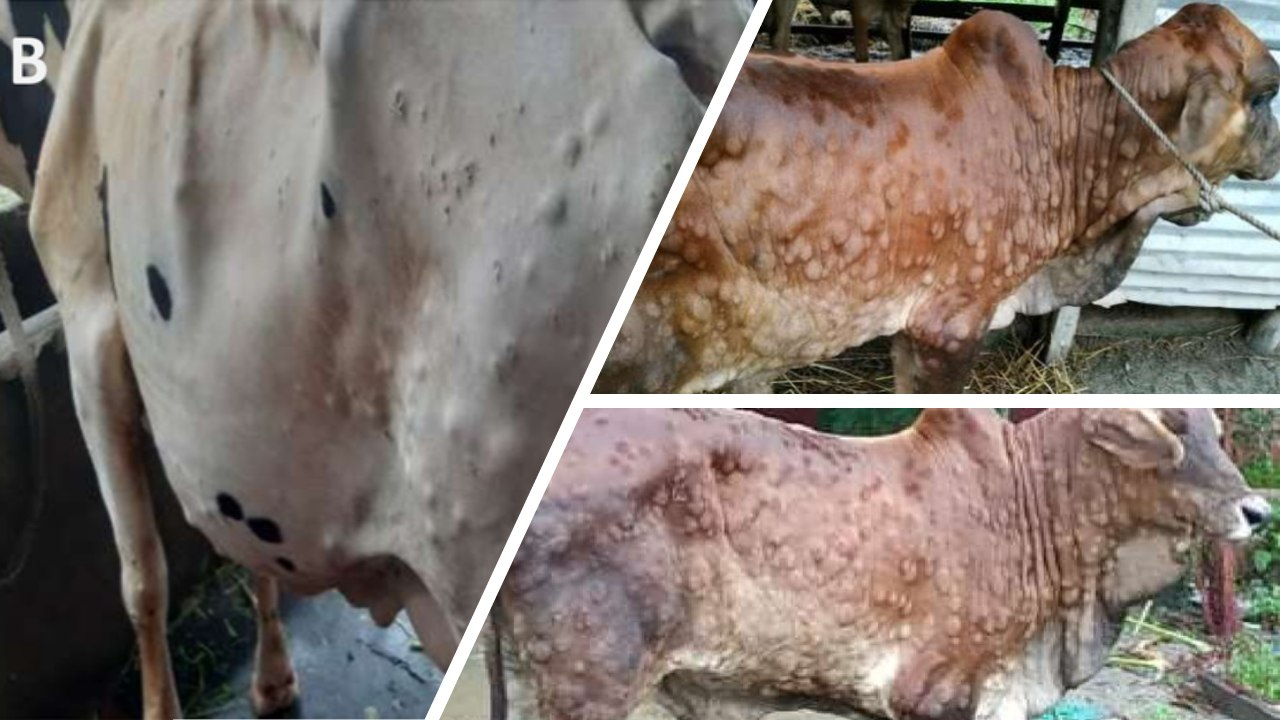Lumpy skin disease has caused more than 85000 cattle deaths. Does it affect milk consumption and the economy?

Lumpy skin disease has caused more than 85000 cattle deaths. Does it affect milk consumption and the economy?
In India, nearly 85,000 cattle have been killed by the viral infection, which has spread to more than 10 states and union territories, primarily Rajasthan.
To stop the illness that causes lumpy skin from spreading throughout the city, the Mumbai Police have banned the transportation of cattle. This implies that cattle cannot be transferred from the location where they are being reared or brought to markets. The directive became effective on September 14 and will remain in effect until October 13.
In Maharashtra, where the illness has already spread to 25 districts, 127 animals have died. More than ten States and Union Territories now have cattle that are affected by the infectious viral virus. The spread of the illness, which has become a problem for the dairy industry, is being managed by the Center and States, according to Prime Minister Narendra Modi’s announcement last week.
How does lumpy skin disease spread? What is it?

The lumpy skin disease virus (LSDV), which is a member of the poxviridae family’s genus capripoxvirus and is responsible for lumpy skin disease, is a common skin condition (smallpox and monkeypox viruses are also a part of the same family). The sheeppox virus (SPPV) and goatpox virus (GTPV), as well as the LSDV, are comparable in antigenic structure and the immunological response they elicit. Because the virus is not zoonotic, people cannot get the illness.
It affects host animals like cows and water buffaloes and is a contagious vector-borne illness that is spread by mosquitoes, certain biting flies, and ticks. The Food and Agriculture Organization (FAO) of the United Nations claims that infected animals exude the virus through their oral and nasal secretions, which may contaminate communal feeding and drinking troughs. Therefore, the illness can spread through contaminated food and drink as well as through direct contact with the vectors. It can also spread during artificial insemination through animal semen, according to studies.
The lymph nodes of the infected animal are affected by LSD, which gives it its name since the nodes grow and resemble lumps on the skin. The head, neck, limbs, udder, genitalia, and perineum of the infected cattle develop cutaneous nodules that are 2–5 cm in diameter. The nodules may subsequently grow into ulcers and finally form skin scabs.
The disease also causes a high temperature, a fast decrease in milk production, discharge from the eyes and nose, salivation, appetite loss, depression, damaged hides, emaciation (thinness or weakness) in animals, infertility, and miscarriages. According to the FAO, the incubation period, or the interval between infection and symptoms, lasts around 28 days, ranging from 4 to 14 days in some other estimations.
The morbidity of the illness ranges from two to forty-five per cent, and the fatality rate is now less than ten per cent. However, the reported mortality of the current epidemic in India is up to fifteen per cent, particularly in cases being reported in the country’s western region (Rajasthan).
Which regions are affected, and how did it get to India?

The illness was initially discovered in Zambia in 1929 and quickly spread to much of Africa, West Asia, Southeastern Europe, and Central Asia. More recently, in 2019, it moved to South Asia and China. According to the FAO, the LSD illness is presently prevalent in several nations in Africa, as well as in portions of West Asia (Iraq, Saudi Arabia, and the Syrian Arab Republic).
After initially affecting Bangladesh in July 2019, the spread in South Asia reached India in August of the same year, with the first cases being discovered in Odisha and West Bengal. The FAO notes that “the long porous borders between India, Nepal, and Bangladesh allow for a substantial amount of bilateral and informal animal trading, especially cattle and buffaloes.” According to the UN agency, this could have helped LSD spread between Bangladesh and India between July and August of 2019. While the 2019 outbreak eventually receded, the new expansion in India started in June of this year.
Is it okay to consume the milk of the afflicted animals?

According to studies, it has not been feasible to determine if milk from an infected cow contains the LSDV virus, which is both alive and contagious. However, the FAO emphasizes that a significant amount of milk in Asia is treated after it is collected, either by pasteurization, boiling, or drying to produce milk powder. This procedure makes sure the infection is either eliminated or rendered inactive.
Notably, the Joint Director of the Indian Veterinary Research Institute (IVRI) informed PTI that since Lumpy Skin Condition is not zoonotic, it is acceptable to ingest milk from cattle that have the disease. “Milk from sick livestock can be consumed without concern. Whether you drink milk that has been boiled or not, there is no difference in its quality “explained Mr Mohanty.
How does this affect the economy?

According to FAO and the World Organisation for Animal Health, the disease’s spread may result in “significant” and “severe” economic losses (WOAH). Due to weakness and appetite loss brought on by mouth ulcers, the condition causes the animal to produce less milk. Poor growth decreased draught power, and reproductive issues such as abortions, infertility, and a shortage of semen for artificial insemination can all contribute to revenue losses.
The whole value chain is economically strained by movement and trade restrictions following infection. The economic effect of LSD on nations in South, East, and Southeast Asia “was predicted to be up to $1.45 billion in direct losses of livestock and productivity,” according to a risk assessment analysis by the FAO based on data available from 2019 to October 2020.
The current epidemic in India has turned out to be a problem for the dairy industry. With over 210 million tonnes produced yearly, India is the world’s largest producer of milk. The number of cattle and buffalo in India is the highest in the world. It has resulted in decreased milk production, which decreased by around three to six lakh litres per day in Rajasthan, which is seeing the severe effects of the lumpy skin illness. According to reports, the development of the illness has also led to a decrease in milk output in Punjab.
The livelihoods of smaller poultry producers are seriously threatened by the illness, according to FAO. Notably, farmers in Punjab and Uttar Pradesh have suffered losses owing to the deaths of their animals and are requesting compensation from their state governments.
What steps is the government doing and how serious is the current spread in India?

Around the end of July, the current epidemic began in Gujarat and Rajasthan, and by the beginning of August, it had moved to Punjab, Himachal Pradesh, Andaman & Nicobar, and Uttarakhand. Then it expanded to Haryana, Uttar Pradesh, and Jammu & Kashmir. It was recorded in the most recent weeks in Delhi, Jharkhand, Madhya Pradesh, and Maharashtra. As of September 11, the virus has infected approximately 16 lakh livestock across 197 districts.
More than 50,000 fatalities, predominantly cows, have been recorded from Rajasthan out of the roughly 75,000 livestock that the illness has claimed. As part of the FAO’s LSD spread control plan, vaccinations for susceptible populations with more than 80% coverage, movement control for bovine animals and quarantining are all recommended, biosecurity is implemented through the sanitisation of sheds and the spraying of insecticides, the strengthening of passive and active surveillance, awareness of risk mitigation among all stakeholders, and the establishment of large surveillance and protection zones.
Among the affected States, the ‘Goat Pox Vaccine’ is “very effective” in containing the spread of LSD, according to the Union Ministry of Fisheries, Animal Husbandry and Dairying. 97 lakh vaccine doses had been given as of the first week of September. The affected States have imposed movement restrictions, are isolating infected cattle and buffaloes, and are applying insecticides to kill mosquito-borne vectors. Some of the affected States, including Maharashtra, Rajasthan, Delhi, and Uttar Pradesh, have also established specialized control rooms and helpline numbers to assist farmers whose cattle have been infected.
A novel indigenous LSD vaccine has been created by two ICAR institutions, and the Center intends to commercialize and distribute it within the next three to four months. According to ICAR and the Ministry of Agriculture, exploratory testing using the vaccination on animals affected by the ongoing 2022 outbreak has shown promising outcomes. The vaccine is based on LSD virus samples from cattle in Ranchi that were affected in the 2019 outbreak.
In Maharashtra, lumpy skin disease claimed the lives of 127 cattle. More than ten States and Union Territories now have cattle that are affected by the infectious viral virus. The sheeppox and goatpox viruses show antigenic similarities with the virus that causes lumpy skin disease. Since it is not a zoonotic virus, people cannot get the illness. The lymph nodes of the infected animal are affected by LSD, which gives it its name since the nodes grow and resemble lumps on the skin.




